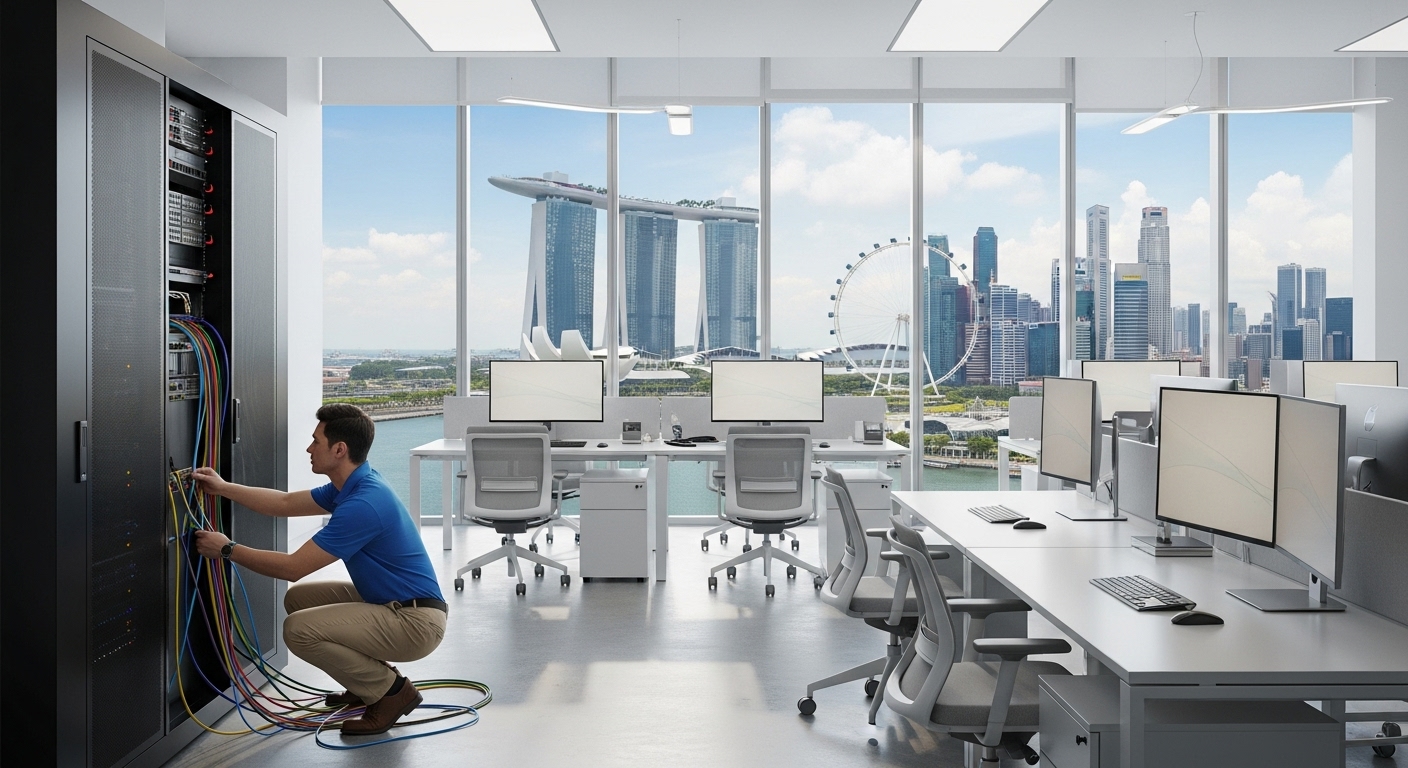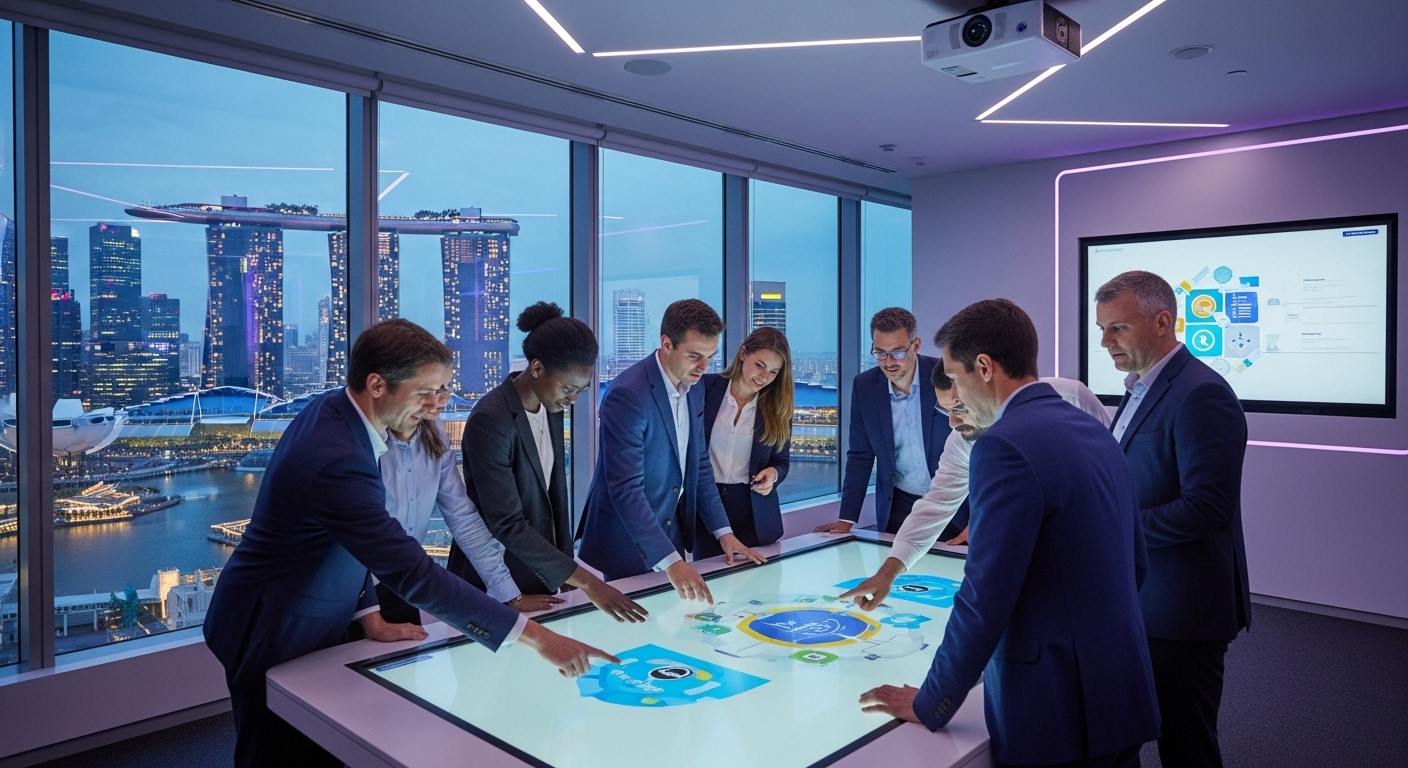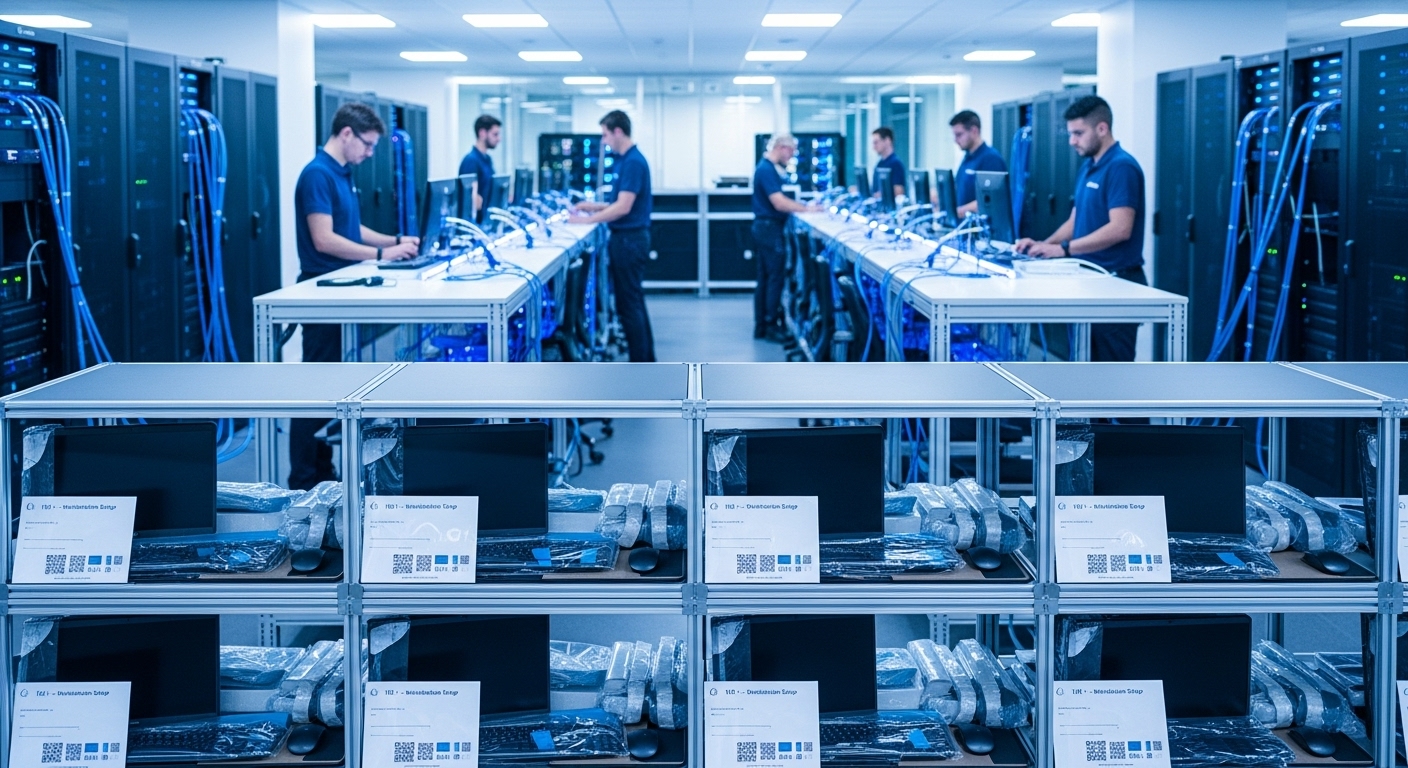Establishing a new office in a globally recognized business hub is a monumental step, but the true foundation of a modern enterprise lies in its digital infrastructure. For companies setting up in a location synonymous with technological advancement and financial prowess, a generic IT checklist simply won’t suffice. You need a strategic, robust, and scalable framework—a digital spine that supports every facet of your operations. This guide is designed to provide that framework, moving beyond basic setup to architecting a resilient IT ecosystem. We will explore the critical phases of IT planning, from initial strategy and network design to multi-layered cybersecurity and the integration of smart office technologies. By understanding these pillars, you can ensure your new office is not just connected, but primed for security, efficiency, and future growth from day one.
Charting the Blueprint: Foundational IT Strategy and Planning
Before the first server is purchased or a single cable is run, a comprehensive IT strategy must be developed. This foundational stage is about aligning technological infrastructure with core business objectives. Begin with a thorough needs assessment. How many employees will you have on day one, and what is your projected growth over the next three to five years? What are your critical software applications—CRM, ERP, design software—and what are their specific network and processing demands? Answering these questions prevents both under-provisioning, which stifles growth, and over-provisioning, which wastes capital. Budgeting is the next critical step. Beyond hardware and software licenses, your budget must account for installation, security subscriptions, potential managed service provider (MSP) fees, and ongoing maintenance. In a premium district, high-speed connectivity and advanced security are non-negotiable investments. Finally, ensure your plan addresses the local regulatory environment. For instance, operating in Singapore requires strict adherence to the Personal Data Protection Act (PDPA), which governs the collection, use, and disclosure of personal data. Your IT strategy must incorporate compliance from the ground up, dictating how data is stored, accessed, and secured to avoid significant legal and financial penalties.
Architecting Connectivity: Network Design and Infrastructure
The performance of your entire digital operation hinges on the quality of your network architecture. This is the central nervous system of your digital spine. The first layer is physical: structured cabling. Investing in high-quality Cat6A or fiber optic cabling provides the bandwidth necessary for data-intensive tasks and future-proofs your office for emerging technologies. Your Wi-Fi network should be equally robust. Deploying Wi-Fi 6 or 6E access points ensures high-speed, low-latency wireless connectivity for a dense device environment. Careful planning of access point placement is crucial to eliminate dead zones and ensure seamless coverage. For businesses in a location as prestigious as Marina Bay, leveraging the area’s cutting-edge fiber optic infrastructure is a key advantage. When choosing an Internet Service Provider (ISP), look beyond advertised speeds to Service Level Agreements (SLAs) that guarantee uptime and support. A dedicated server room or data closet is another physical consideration, requiring adequate cooling, uninterruptible power supplies (UPS), and physical security to protect your core hardware. This detailed approach to network design ensures that your connectivity is not just fast, but consistently reliable.
Building the Fortress: A Multi-Layered Cybersecurity Approach
In today’s digital landscape, a strong offense is built on an impenetrable defense. For businesses handling sensitive client information or financial data, cybersecurity cannot be an afterthought; it must be a multi-layered fortress integrated into your IT infrastructure from its inception. The perimeter starts with a next-generation firewall (NGFW) to inspect and filter traffic, but security must extend far beyond the network edge. Endpoint protection on all devices—laptops, desktops, and mobile phones—is critical to defend against malware, ransomware, and phishing attacks. Implement a robust access control policy based on the principle of least privilege and Zero Trust, meaning no user or device is trusted by default. This should be enforced through multi-factor authentication (MFA) across all applications and systems. Data encryption, both at rest (on servers and hard drives) and in transit (across the network), is essential to protect information even if a breach occurs. Lastly, the human element remains the most vulnerable. A comprehensive security strategy must include regular, mandatory security awareness training for all employees to teach them how to recognize and report threats. This layered approach is the only way to build a truly resilient security posture.
Ascending to the Cloud: Services and Data Management
The debate between on-premise and cloud infrastructure has largely settled in favor of a hybrid approach, but a cloud-first strategy offers unparalleled flexibility, scalability, and accessibility. Leveraging cloud services allows you to reduce your physical hardware footprint and shift from a capital expenditure (CapEx) model to an operational expenditure (OpEx) model. When selecting cloud providers—whether for Software as a Service (SaaS) like Microsoft 365, Infrastructure as a Service (IaaS) from AWS or Azure, or Platform as a Service (PaaS)—prioritize those with data centers located in Singapore. This ensures lower latency for your users and helps maintain data sovereignty, which can be crucial for regulatory compliance. Beyond service delivery, the cloud is the cornerstone of modern data management, particularly for backup and disaster recovery. A robust disaster recovery plan (DRP) should utilize geographically separate cloud regions to back up critical data and systems. This ensures that in the event of a local outage, fire, or other disaster, you can quickly restore operations and maintain business continuity, a non-negotiable requirement for any serious enterprise.
The Intelligent Workspace: Integrating Smart Office Technology
A premier office is more than just a place to work; it’s an experience that can drive productivity, collaboration, and employee satisfaction. Integrating smart office technology transforms a static space into a responsive, intelligent environment. This is especially true for companies looking to project a modern image in a forward-thinking business district like Marina Bay. Start with IoT sensors to gather anonymous data on space utilization. This data can inform future office layout decisions, identify underused areas, and optimize real estate costs. Smart lighting and climate control systems can automatically adjust based on occupancy and time of day, significantly reducing energy consumption and improving employee comfort. For collaboration, integrated room booking systems that sync with employee calendars can eliminate friction and scheduling conflicts. Furthermore, state-of-the-art audio-visual (AV) equipment in meeting rooms, including high-quality cameras, microphones, and interactive displays, is essential for seamless hybrid work. These technologies aren’t just gadgets; they are strategic tools that create a frictionless, efficient, and engaging workplace that attracts and retains top talent.
Assembling the Team: Vendor Selection and Logistics Management
Executing your IT setup plan requires a team of reliable partners. Selecting the right vendors is as critical as designing the right architecture. When choosing an MSP, look for a provider with a strong track record in Singapore, proven expertise in your industry, and 24/7 support capabilities. For hardware and software procurement, work with reputable suppliers who can manage the logistics of ordering, delivery, and inventory. The physical setup requires precise coordination. This involves working closely with your office fit-out contractor to ensure that power outlets, data ports, and server room requirements are met during the construction phase. Coordinating with building management in a location like Marina Bay is also crucial for scheduling deliveries, managing contractor access, and understanding any building-specific regulations for installations. A phased rollout plan is often the best approach to manage the complexity. This involves setting up the core network first, followed by servers, workstations, and finally, peripherals and smart devices. This methodical process minimizes disruption and allows for systematic testing at each stage, ensuring a smooth and successful launch.
In conclusion, creating the digital spine for your new office is a complex but vital undertaking. It transcends a simple IT setup and becomes an act of strategic business architecture. By focusing on the six core pillars—foundational planning, robust network design, fortress-like cybersecurity, intelligent cloud adoption, smart workspace integration, and meticulous vendor management—you build an infrastructure that does more than just function. You build a competitive advantage. A well-architected IT ecosystem ensures operational resilience, enhances data security, and empowers your team to perform at their peak. It transforms your physical office into a high-performance engine for productivity and innovation. For any company making its mark in a world-class hub, this strategic investment is not just about connecting computers; it’s about laying the digital foundation for sustained success and future growth.





